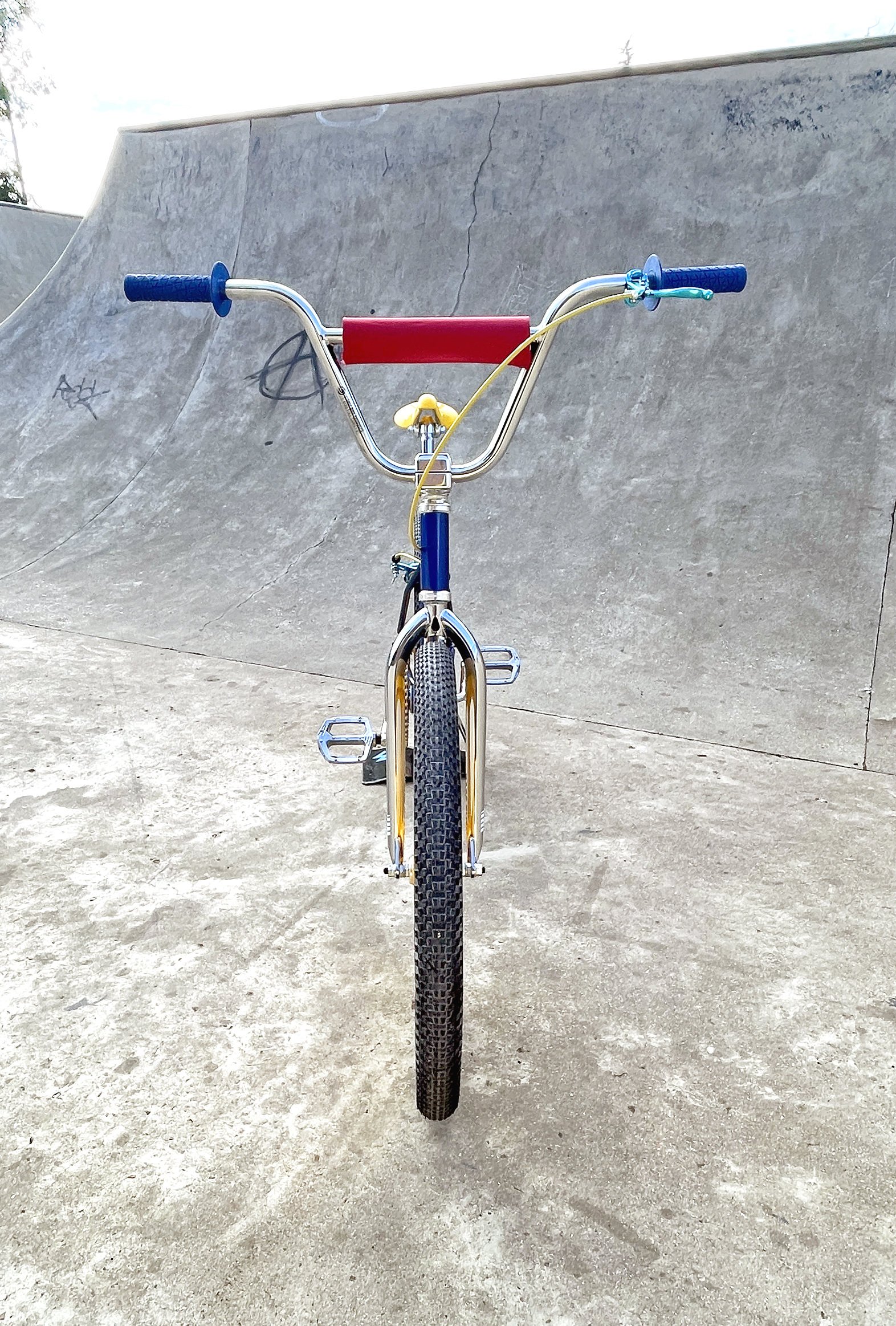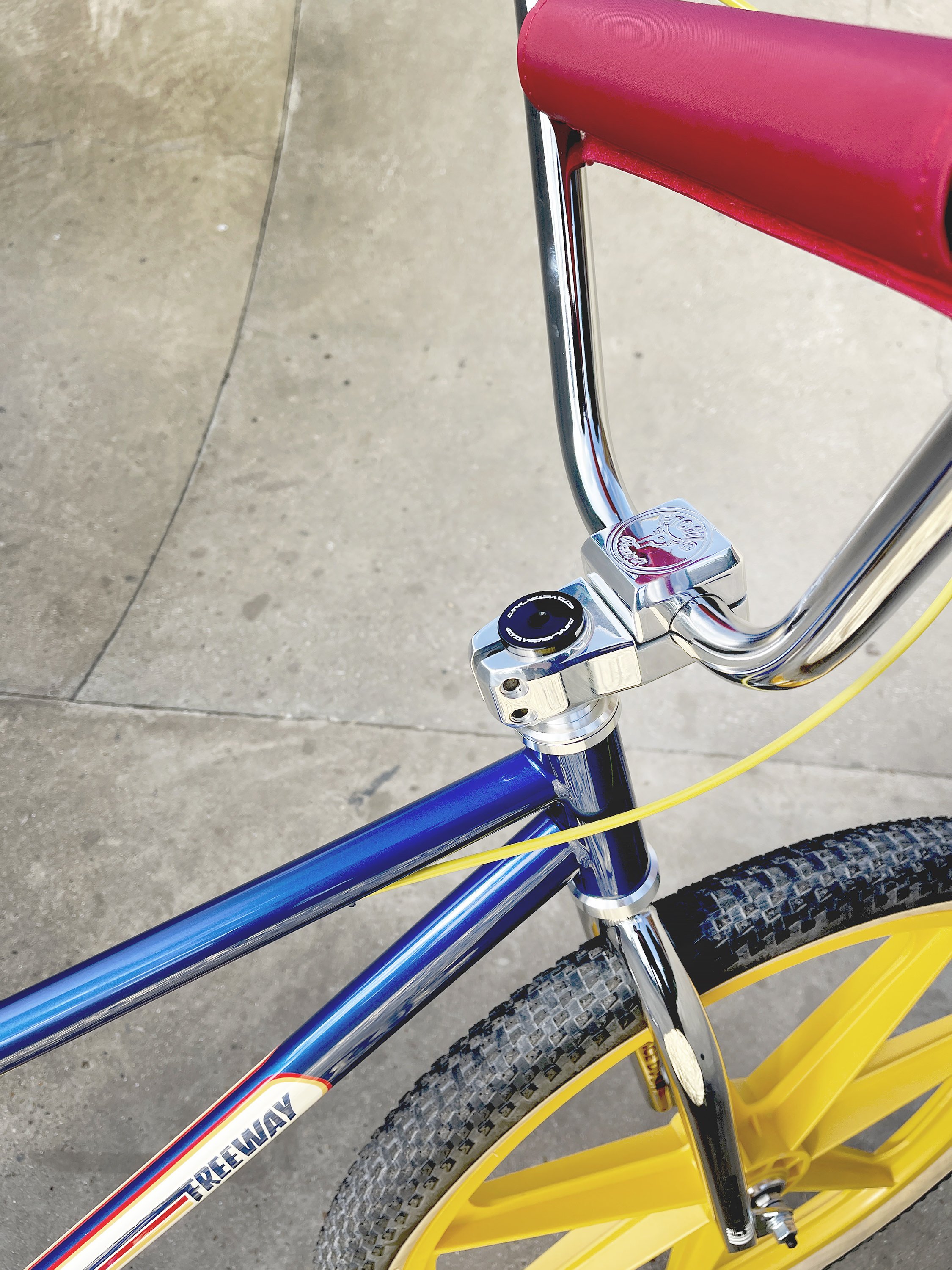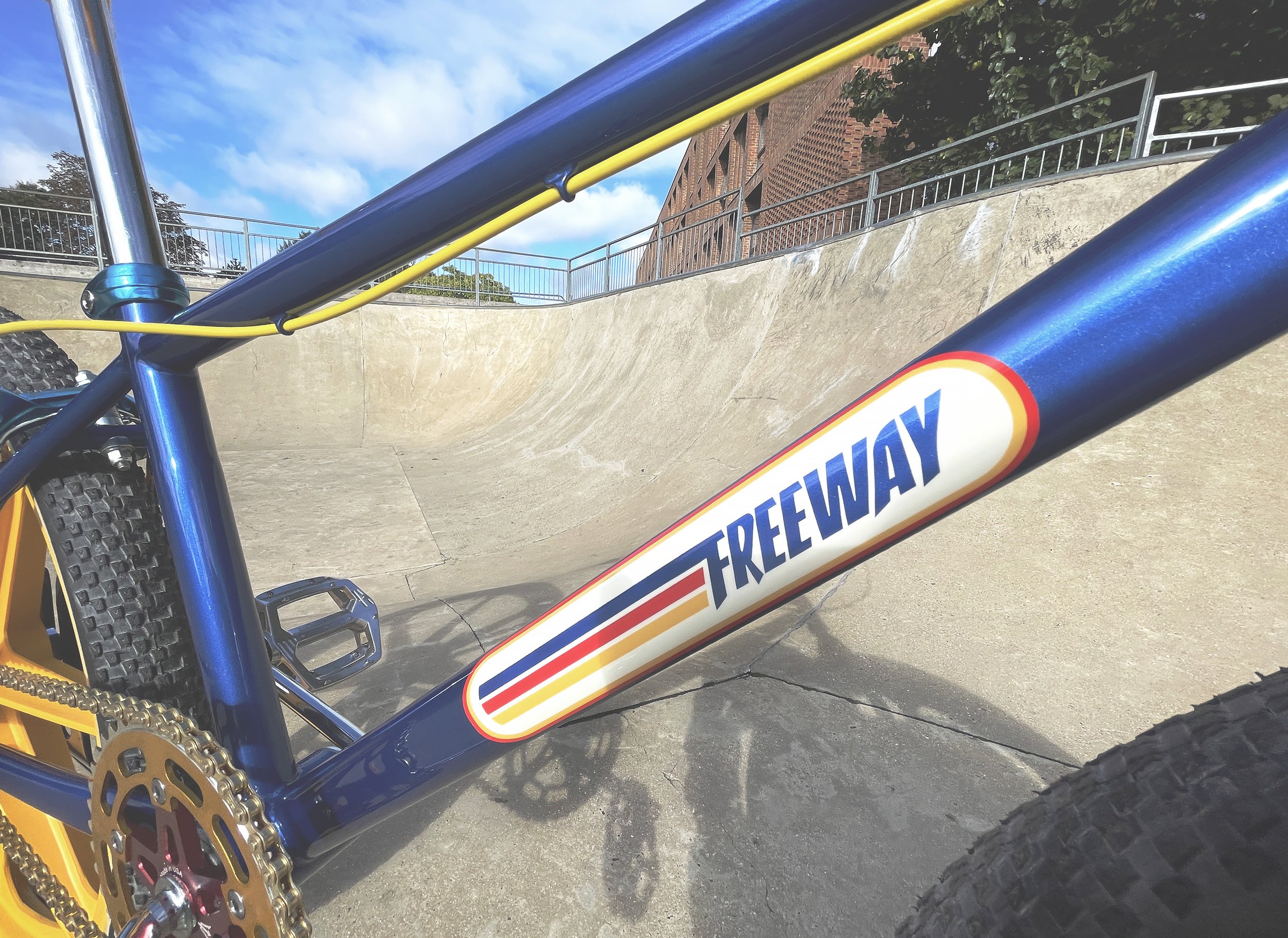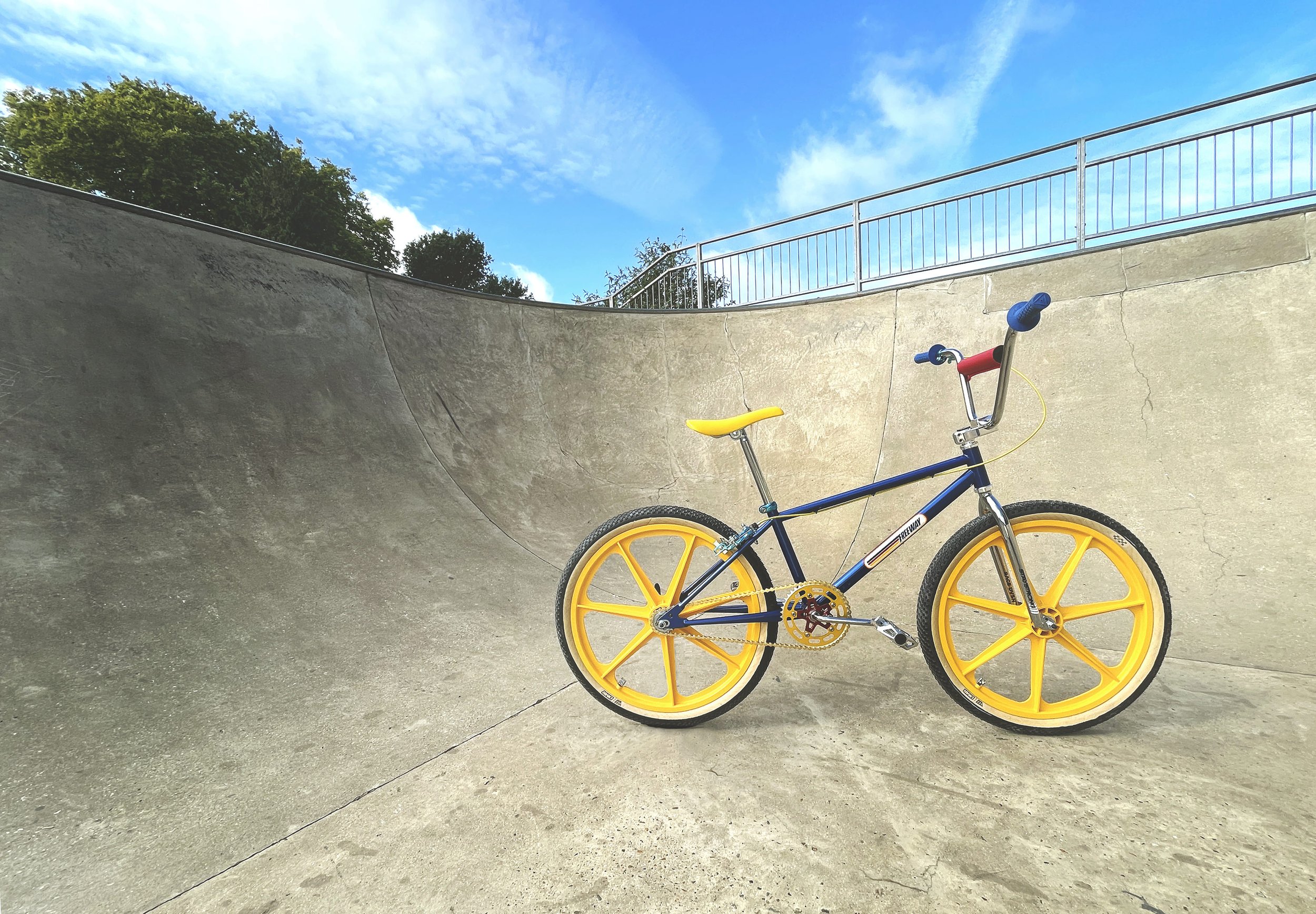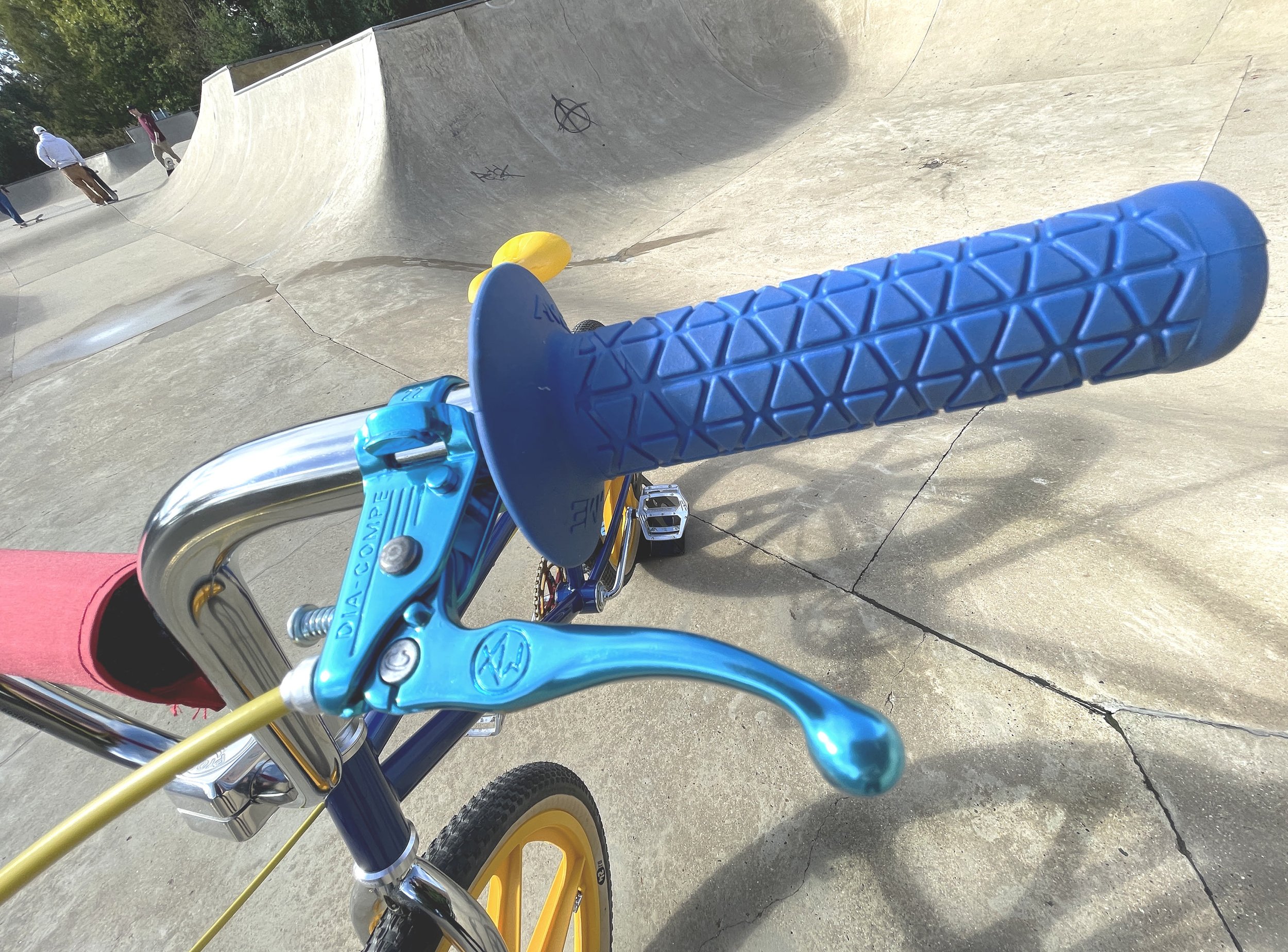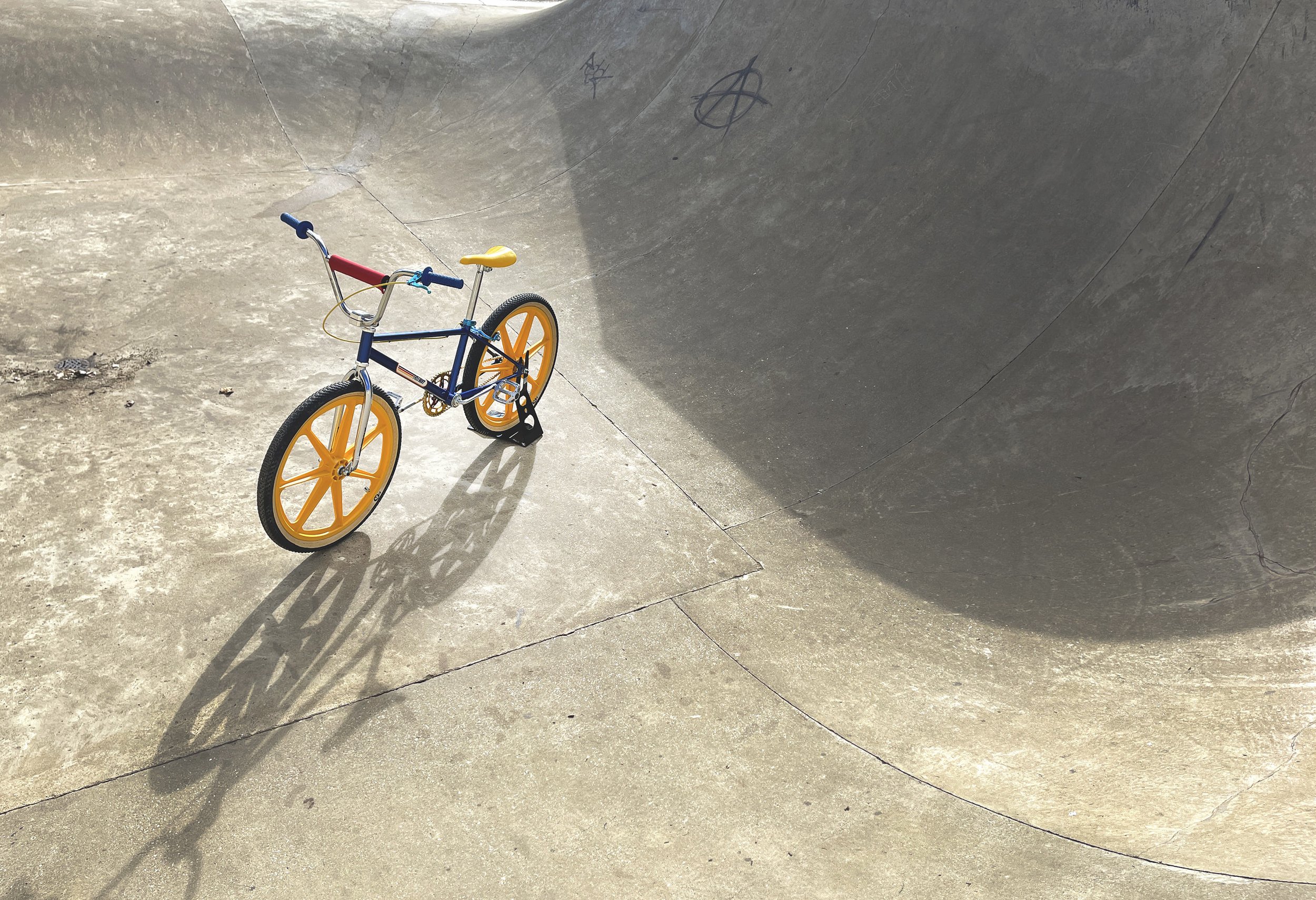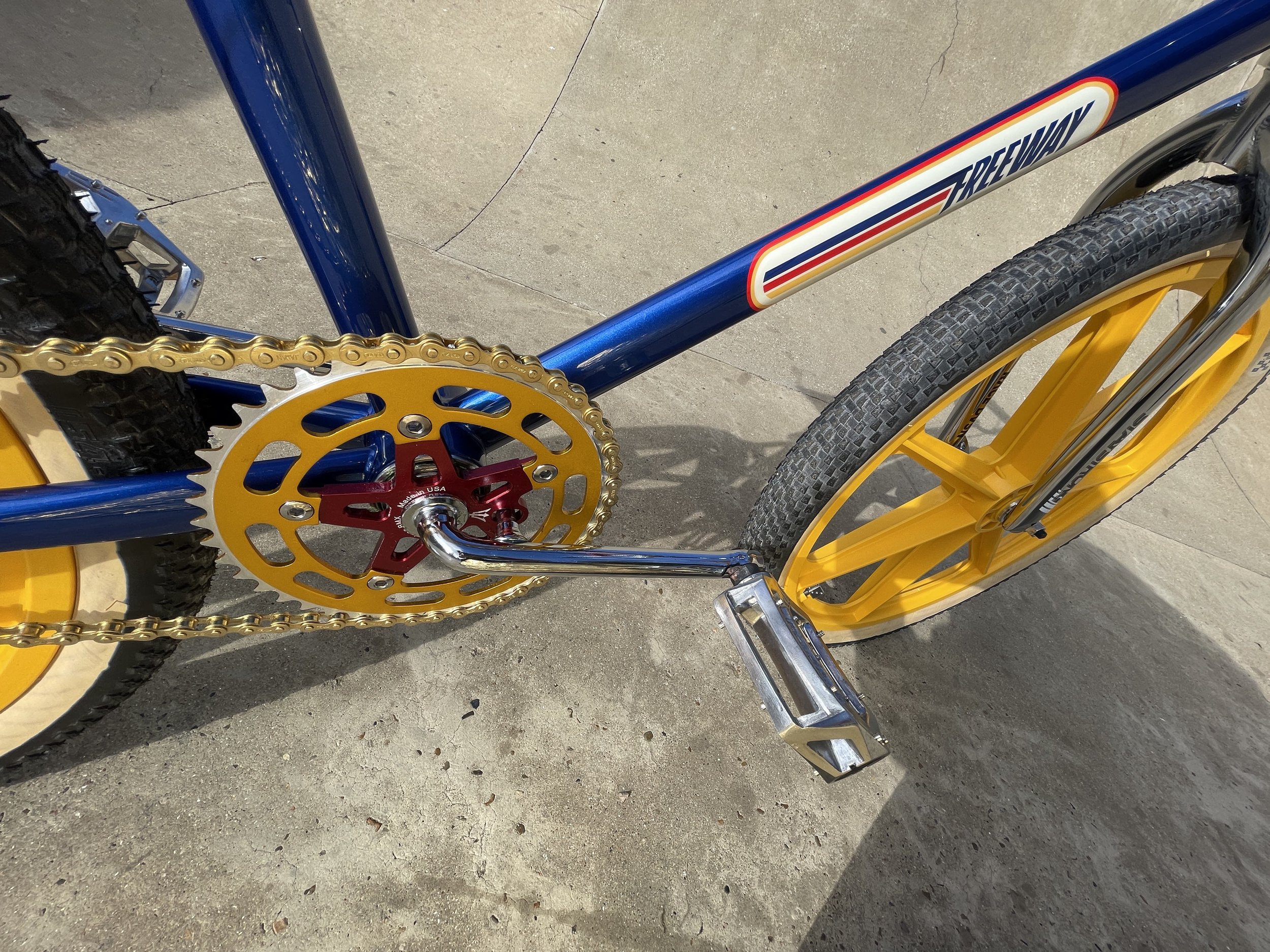Keeping it rad with Eighties Acorn Freeway replica
We talk about experiencing a first bike feeling a lot here at Spoon, and that’s because we’re trying to create bikes that feel that special: bikes that make you feel like you can go further and faster than you ever have before, just like your first one did.
We love that as a concept, and we think that by focusing on better fit, fabrication and finish—getting all those things right—Spoon riders can shoot off down the road on one of our bikes and recapture some of that freedom and magic they felt on their very first adventures on two wheels.
One recent customer took that concept so far, he asked us to remake his actual very first bike as faithfully to the original as possible—not an easy task, given his first bike was an Acorn Freeway.
The bike was a knock-off of a Skyway and made by Freeway in Hull. The company has long-since disappeared, but their budget Skyway, complete with their own version of Skyway’s famous Mag Wheel, was available at the time for much less cash, and we remembered them well from our childhood.
Not many round our way could afford a Skyway, so I think these Acorn Freeways must have been pretty common back then. They’re certainly not now, though, and the only references we had to go on were one or two from the BMX Museum, an online repository for all things rad.
We love BMX here, but we haven’t made one for years, so I put in a few calls to Alan’s BMX to source some parts. The images we had showed a blue frame with matching blue anodised brakes. They could have been a set of the original Dia Compe MX1000, but it seems likely they were budget copies. Surprisingly, Alan had the legit versions in stock. It turns out they still make them, believe it or not. We also found a host of period correct parts, including sick one-piece cranks.
Next was a call to Ted James at Ted James Design, who makes some of the world’s toughest handmade BMX frames. He’s also an encyclopaedia of knowledge in this area, so he helped us work out what features we’d need to keep from the old bike—features like the 51mm American BB for the one-piece crank—and what features we could do away with, like the 1” steerer that would have been on the original bike. Then, he made the frame by hand for us. Look closely and you'll see some seriously lovely welding and super tidy dropouts, designed in the original style but slightly more refined.
We also added in a few flourishes, like the very cool Profile stem and the Izumi chain in gold. There’s no way the original would have had parts like that, but because nostalgia has a habit of fogging our memories, we needed a bit of bling to make sure the new bike recalls all the wonder our customer had for what would have been a pretty basic bike, in terms of components, when he was a kid.
Sam helped to bring the paint right up to date, too. The original would have had a basic powder coat on it, which looked great to a ten-year-old us but was probably finished like a farm gate. Instead, Sam mixed up a metallic blue and applied that and a repro decal mask in off-white with retro tones of red, yellow and blue. The paint really pops, selling the idea that this is still the coolest bike on the estate.
The keen-eyed amongst you will notice it’s got slightly bigger proportions than the original bike, thanks to 24” wheels, fork and frame geometry. The massive rise on the wide bars is also there to give the bike slightly outsized proportions so when the new owner (who presumably is a little taller these days) gets on it, he feels just like he’s riding the original.


